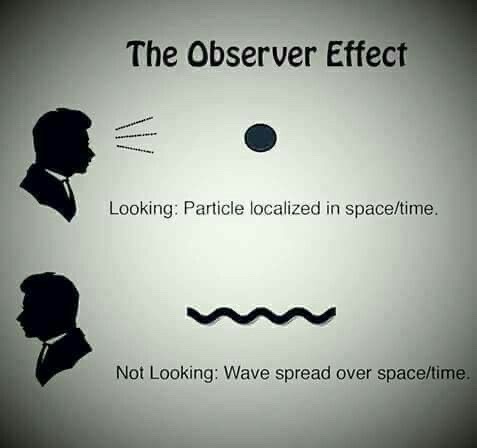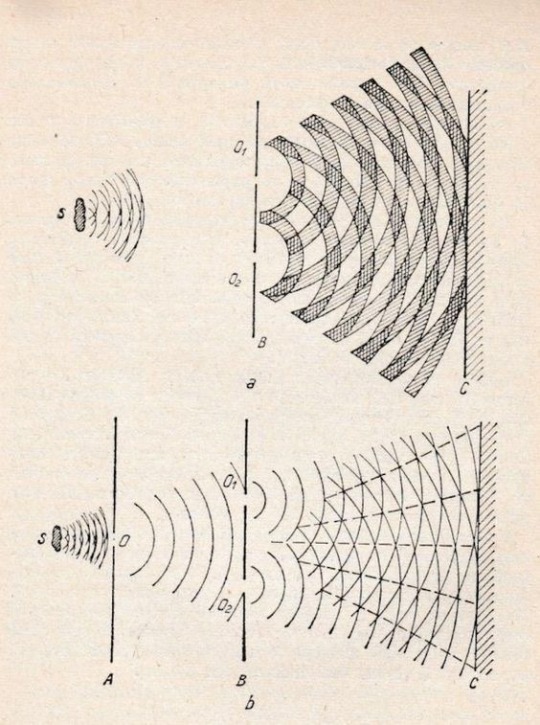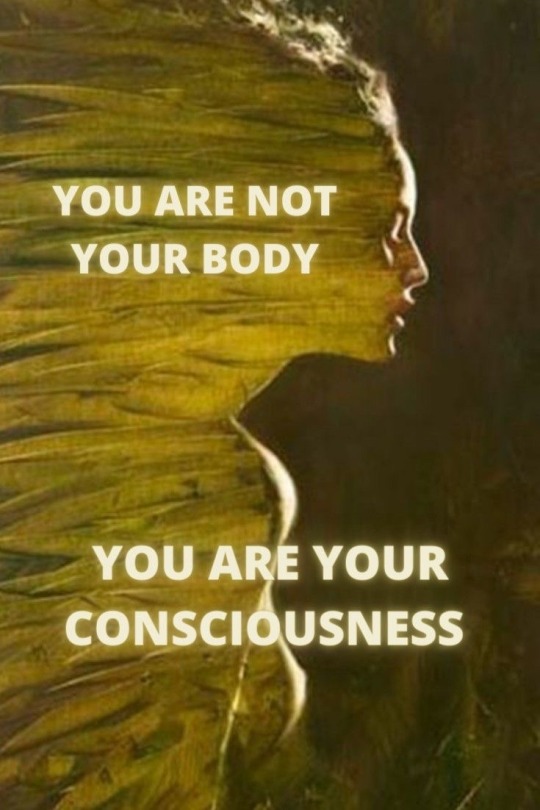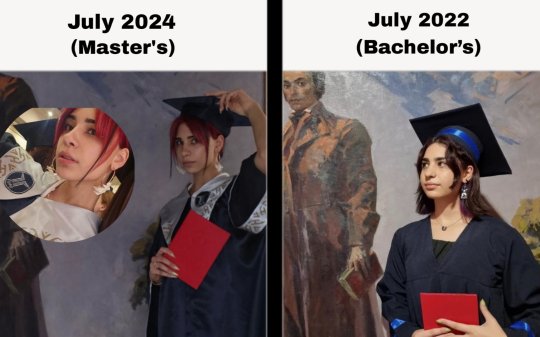#Consciousness and Quantum Physics
Explore tagged Tumblr posts
Text
SELF CONCEPT IS KEY — WHO ARE YOU BEING TODAY?
feel like you’re stuck in a loop?



Pete Sapper said “When you know who you are, your mirror will reflect it, when you don’t know who you are, it will also reflect”
You don’t need to anything for your manifestations to materialise, as they already have, creation is finished, but self concept is something that really helps you wrap your mind around it.
When I say that you are God, do you really and truly know that? And I ask for knowing and not believing because beliefs change all the time. Do you KNOW you are God, or do you just get this rush of excitement and adrenaline after reading some motivational posts just to fall back into old patterns a few hours later?
What colour hair do you have? Let’s say you have black hair and maybe you dyed it blonde, would you constantly go back on the fact that you have black hair, i mean if it was a dye job you got done yesterday, you might forget for a moment, but you’ll be like “oh that’s right, i have blonde hair” and go on about your day, because 1. You KNOW that’s it’s true and 2. You KNOW that you are the person who has blonde hair. That one time you forgot doesn’t negate from the fact that you have blonde hair.
A lot of you “persist and persist”, and wonder why your outer world hasn’t changed, let me tell you something i’m not gonna bullshit you and tell you that these are old thoughts playing out because they aren’t, it’s just not true, there is no separation between your outer and inner, A mirror doesn’t have a mind of its own, it can’t “test” you or show you something that you are NOT, because think of a literal mirror (that’s what this outer world is), when we say that, it isn’t some cute metaphor, it’s the truth. The reason things haven’t changed is because YOU haven’t. Again, think of a mirror, instant reflections are the ONLY TYPE OF REFLECTIONS!! be the person who assumes otherwise? you will stay waiting, looking for posts to motivate you instead of living the life you want.
You can do as many things to manifest your dream body, but if you’re still being the person who is a loser with a shitty figure, guess what?… Have you heard the phrase “You cannot trick God”, since we have now come to terms with the fact that we are God, the term can now be written as “you cannot trick yourself”, you also can’t run from who you are. God, you, your consciousness can tell the difference between believing, and KNOWING. If you KNOW and accept your unfavourable life as true, no amount of wishful thinking and hopeful attempts at techniques will change what you know. So what is there to do? change SELF.
ꨄꨄꨄ
Become God, step into that state of being now, you ARE pure consciousness now, there is nothing to do, nothing to induce. You ARE the void now. You are limitless, you have always succeeded in anything you do, so why not know? Your outer world reflects instantly because you are God and what you say goes. There is no one above you, now if you knew that why are you getting triggered with all the limiting beliefs, why would anyone tell YOU, as God, how to create.
When someone says “your manifestation will ONLY take 3 Days if you do this magnificent method that-”.
Instead of mindlessly following another method like a junkie. You say “wtf i’m literally GOD not you, 3 days?? pfft my shit is instant because i’m just so fucking unlimited and ethereal”
You are God, the only free thinker in your reality. Not even im freely thinking from your perspective, im just a projection. So what if someone tells you that you have to do this and that to get what you want? everyone else is a lowly human, YOU are God. Absolute Intelligence. With words that instantly create. Once you get that through your skull you will never have a day in your life where you are experiencing unfavourable circumstances.
Who cares if Nancy’s dream bod took 3 months?
Who cares if Wyatt took 2 weeks to shift to his dream life?
Who cares if Jessica looped affirmations all day to get her grades?
YOU ARE GOD HERE. Not them. Time is not real and Creation is finished, WHO CARES ABOUT THEM?? YOU. HAVE. EVERYTHING.
I am not religious by any means but i believe a lot of religious books were guides to understand self, that got, as we can see, heavily misconstrued. And there’s this verse:
Joshua 24:15 “As for me and my house we will serve the Lord”
Do you know what that actually means: It means who cares what everyone else’s limiting beliefs are, who cares what everyone else “had” to do, or what everyone else believes. As for you and your mind, You will serve God, That is You.
You are one perception away from everything materialising. This isn’t the Law of Desire, if so everyone would have everything they could ever want, by simply.. wanting it. It’s the law of Being, BE GOD, and put YOURSELF on the pedestal, then you will wake up in this illusion, you will start to see that there are no big and small manifestations. You will start to see that your consciousness created all of this and none of it is real, and nothing will be hard or easy for you anymore, it will just be. You will start to understand that time doesn’t exist, and all this other noise matters not anymore, for you are sovereign. You will start to understand that you are one decision away.
Idc if you have to repeat it, or to visualise yourself as this godly being, idc what you do, even so much as a one-and-done decision as long as you understand who you are.
I get all these asks and dms too (before i turned them off) with problems that would not be problems if you guys understood who you actually are. Some of the things you guys complain about WOULDNT EVEN EXIST if you just stepped into that knowing that you are God.
And I know time doesn’t exist, but for those of you who still resonate with the 3D and human concepts (even tho that’s like, soooo dumb 🙄), you will spend a lot more “time” without what you want if you don’t start BEING the person who has it all.
Focus on that self concept, be the most egotistical, self-obsessed, head-up-your-own-ass typa bitch. For you are God and any lesser treatment of self would be nonsensical.
When you know you are, the world will reflect your power
©salemlunaa




#salemlunaa#reality shifting#shiftblr#void state#pure consciousness#consciousness#shifting timelines#spiritual awakening#spiritual journey#spirituality#self concept#law of self#law of assumption#law of being#4d reality#permashifting#shifting#quantum shifting#quantum leap#quantum jumping#quantum physics#quantum mechanics#success story#loa#loablr#neville goddard#manifestation#i am#i am state#god state
1K notes
·
View notes
Text
HOW SHIFTING WORKS- scientifically based thesis
“we´are infinite beings destined to explore the infinite universe”



NOTE: i´m not a scientist nor a physicist. This essay is based on self interpretation of information and things i´ve learned about consciousness, quantum physics, nature of reality, etc.
We´re four dimensional beings, meaning we´re composed of both physical and non physical (intangible) things. We have three layers: body, psyche (alias consciousness) and soul. Our bodies are just the envelope, the vehicle our consciousness occupies in order to live a human experience. Accordingly, our true self is not our body, but the consciousness that occupies it. Having that in mind, we´re able to move to the next point.
Everything — and this is scientifically proven — is made of energy. Vibrating energy makes matter, and consequently both matter and energy have frequencies. Every single thing has a different frequency: objects, sounds, emotions, etc. Therefore, reality as a whole, with all of its elements combined, vibrates at its own frequency.
Thanks to quantum physics, we know particles of energy can be in different states and multiple places at the same time in superposition when there isn't a conscious observer. While being observed, energy/particles behave differently, being perceived at one state and place. This experiment shows the same particle can and does exist in many states/places at once, but we´re only able to perceive one state/place at a time.
ENERGY → MATTER → REALITY
We can only perceive one reality (state of energy/matter as a whole) at a time for the reason the human experience we're living limits us to do so. Although, like energy is coexisting in many places/states at once, and we know for certain that energy composes matter, which makes the (physical) reality, we can affirm there are many other realities besides this one, but we´re not able neither to perceive nor interact with them.
ENERGY → MATTER → REALITY
“ ↳ MATTER → REALITY
“ ↳ MATTER → REALITY
“ ↳ MATTER → REALITY
“ ↳ MATTER → REALITY
+∞
PINK: what we percieve
BLUE: what coexists but we don’t perceive
Summing things up, there are many other realities coexisting in the very same space as this one, but each reality exists in different frequencies, so realities never interact with each other. That said, we are able to introduce the main character: shifting.
Shifting doesn't happen in your consciousness, shifting happens with — and thanks to— your consciousness. Your body is trapped in this reality because it's part of this reality, for the reason bodies are physical things that can only exist in one state. Your consciousness, on the other hand, contrary to your body, can shift because it's not something physical, it's not made of matter. Consciousness doesn't belong to any reality, it just experiences them. Consciousness cannot die, so when your body faces death, your consciousness continues existing in other realities. This can explain both reincarnation and heaven, since your consciousness shifts to a reality that fits what you expect/believe you´ll experience after death.
With shifting, we´re doing the same but intentionally, choosing the reality we want to experience,with the difference our Cr body is still alive, so we can come back.
By shifting, we´re changing the frequency of our consciousness — which is the same as our Cr— to match the frequency of the reality we want to become aware of. You have to shift your inner world in order to shift the outer physical world (the 4d and the 3d).




#reality shifting#shifting blog#shifting antis dni#reality shifter#loa#4d reality#shifting community#loa tumblr#loassumption#neville goddard#shifting method#shiftblr#shifting stories#shifters#shifting#shiftbr#shifting motivation#shifting consciousness#shiftingrealities#anti shifters dni#hogwarts shifting#shifting advice#shifting diary#shifting to desired reality#shifting storytime#shifting to harry potter#shifting to hogwarts#quantum physics#quantum jumping#quantum mechanics
2K notes
·
View notes
Text

In May 1921, American polymath Walter Russell entered a 39-day coma-like state, during which he claimed to have accessed “the source of all knowledge.” Upon awakening, he frantically wrote down what he had seen — pages filled with philosophical, scientific, and spiritual revelations that would later form the foundation of his manuscript *The Universal One*. Though he sent his findings to 500 leading minds of the time, nearly all dismissed him as mad — except one. Nikola Tesla, the visionary inventor, was so struck by Russell’s insights that he urged him to seal the work away for a thousand years, insisting that humanity was not yet ready for its truths.
Walter Russell’s revelations reimagined the very structure of reality. He argued that matter was not solid but crystallized light slowed by thought — that everything around us, from rocks to human bodies, was composed of light patterns, shaped by consciousness. He believed the universe was fundamentally mental, not material, and that all things moved in rhythmic cycles — expansion and contraction, like breath. He dismissed opposites like good and evil as illusions, asserting instead that everything sought harmony and balance. To Russell, death wasn’t an end but the release of compressed light returning to its source. Even time, he claimed, wasn’t linear, but a spiral where past, present, and future coexisted.
These ideas were radically ahead of their time, blending metaphysics, wave dynamics, and a deep sense of universal unity. He believed electricity was a living spiral of energy, not merely electrons in motion, and that the vacuum of space was in fact a vibrant sea of untapped potential. Health, in his view, was the natural rhythm of the body, and disease was simply a disruption of that flow. Though ignored or ridiculed during his lifetime, Russell’s work now draws new attention in an era where quantum physics and consciousness studies begin to echo the same questions. To many, he is no longer a forgotten eccentric, but a prophet of a paradigm yet to come.
#Walter Russell#polymath#mathematics#science#quantum leap#quantum physics#quantum jumping#consciousness#light#energy#magic#ascension#alchemy#enlightenment#kundalini awakening#spiritual awakening#sacred geometry#godhood#nikola tesla#out of body experience#simulation theory#simulated reality#simulated universe#holographic universe#manifesting#manifestation
581 notes
·
View notes
Text
Dreaming and Lucid dreaming are Shifting.

Did that make you mad? Good, now read this till the end.
- Dreams: a series of thoughts, images, and sensations occurring in a person's mind during sleep.
- Lucid dreaming: dreams when you know you're dreaming while you're asleep.
- Shifting: a practice where individuals shift their awareness to alternate realities.
DREAMS
Since our awareness is shifting every second, what happens when we go to sleep? When our awareness stops being aware what happens?
Kids, kids, your awareness stops being aware here when you sleep. What about other realities?
When your conscious self goes to sleep, your subconscious self, which is connected to every reality imaginable what does it to?
It explores.
It explores all the different realities without limitations. Those are dreams. Every dream you've had is a different reality.
You are unaware while dreaming. You can't control these dreams. Why? Because did you think you can control your reality before stumbling upon manifesting or shifting? It's conditioning that is common in most of your dreams because you are conditioned that way, to believe reality cannot be controlled. This is why sometimes you can't differentiate between dreams and reality. Because they're both the same thing, one just happens when you're asleep.
We dream every night. The average is about 4-6 times each night. You shift every night. You remember some, you forget some. For me to explain why we forgot I'd have to make a different post because it'd get very long. For now just use Google.
"But why do my dreams revolve around this reality?" you ask. Because you're dreaming with the beliefs and conditioning of this reality.
If you were born in a magical world and were aware there, then your dreams will revolve around magic.
Shifting happens when you become aware of a different reality, When you've known only a particular reality your whole life, you subconscious only goes to different versions of that really. (I said subconscious because your conscious is asleep)
This is not fixed by the way. Like when you see a movie and you dream about it. When you become aware of a different world, you shift to (dream about) a different world.
Emotions play a important role in dreaming as well. They decide what your dream will be in different ways. Example: When you have a crush, you get a dream of being with them, it was fueled by your emotions of wanting to be with them. That there, is a reality where you are in a happy relationship with your crush.
Dreams are you shifting realities while unaware based on your beliefs, emotions, thoughts and conditioning of this particular reality.
Wait, beliefs, emotions, thoughts and conditioning? That sounds familiar. What else does that make? Oh yeah, your CR.
LUCID DREAMING
Now, since we've got the first topic covered, why can we control some dreams and not the other? People train themselves to lucid dream. It is possible to control all your dreams. When you become aware of the spiritual aspect of things, you get more vivid, lucid dreams because that is you taking control back whether it's a dream or your reality.
You can still lucid dreaming without ever knowing any spiritual aspect of anything. Why? Because shifting is the essence of existence. You shift every second, even sleeping.
You become aware in a dream and control it much like you scripted you can similar to your dr. It's the same.
I know what you're thinking, if they're the same, why does lucid dreaming and shifting feel so different?
Because you're aware of the fact that you're lucid dreaming. Emphasis on the dreaming here. You know you can control it, but you think you're still dreaming. 'Dreaming' for us defines that it's not real when in fact it is. If you changed your awareness to it being an actual reality, congratulations you've shifted with full awareness this time.
HOW DOES SHIFTING RELATE TO THEM
Dreaming and Lucid dreaming are a part of shifting. They are sub categories of shifting.
When you DREAM you're unaware of it being a dream, you think it's happening right now, but your conscious is asleep.
When you LUCID DREAM you're only half aware because you still believe that it's a 'dream' that you control.
When you SHIFT you're fully aware. Your conscious and subconscious are both in focused on one reality in front of you, like in your CR.
Everything you know or don't know is a part of shifting. Shifting is everything. Dreams and Lucid dreaming are not that different after all. They are different experiences yes. But the core of shifting is the same everywhere.
WHAT LEAD TO ME FINDING THIS OUT
I actually knew this for sometime, but it didn't hit me until a few days ago. How much we underestimate the mind in our daily life. Thinking shifting is something that leads us somewhere, when in reality it's us that leads shifting. You're all shifters because you're human. Human nature is shifting itself.
I've experimented in my dreams, becoming lucid and telling my mind to shift me places, to shift me back. Just whatever you can think of. The amount of power we hold in our dreams is the same as we hold in our daily life. Why the difference?
Time isn't real, so is reality. Who's to know except you?
Scientists do not know why we dream. Here is your answer.
This is my belief. My knowledge. My knowing. You don't have to accept this. You can think they're different, not at all related. That I'm just spouting nonsense. But then you are forgetting that we're shifting 24/7 why would that not include everything including dreams?
I'm open to opinions and questions. Please be civil and do not fight regarding this. Do not spread misinformation.
#shiftblr#reality shifting#shifting community#shifting#shifting blog#shifters#shifting antis dni#shifting reality#shifting realities#shifting consciousness#shifter#shifts#shift#shifting mindset#shifting motivation#lucid dreaming#dream#dream interpretation#dreaming#shiftinconsciousness#quantum shifting#quantum jumping#quantum mechanics#quantum physics#quantum leap
406 notes
·
View notes
Text

#quantum#quantum intuition#quantum mechanics#energy#oneness#we are all one#quotes#spiritual#inspiration#life#soul#inspirational#spirituality#universe#love#spirit#spiritual community#spiritual awareness#spiritual awakening#spiritual development#spiritual healing#spiritual journey#spiritualgrowth#spiritualguidance#science#physics#quantum physics#consciousness
555 notes
·
View notes
Text
Guys don’t worry if you haven’t shifted yet, it’s not like there’s a time limit.
I personally believe in quantum immortality. We are not our bodies so we cannot die.
So don’t think you have to shift before you die, you’re literally immortal babes.
#shifting diary#shifting script#shifting motivation#shifting community#shiftblr#shiftingrealities#shifting blog#shifting consciousness#quantum immortality#quantum jumping#quantum physics#quantum leap#shifters#reality shifting#desired reality#conciousness
152 notes
·
View notes
Text
“ermmm it takes 21 days minimum to shift/respawn and the process can take a long time!”
“ermmm how many days do I listen to this sub?”
“ermmm I tried to shift last night but nothing worked maybe I’m not meant to shift/respawn.”
“ermmm shifting/respawning was actually a huge psychosis event during 2020-2021! look at my script wasn’t it cringe??? lmao I was so quirky.”
“ermmm guys shifttok and shifting youtube have GREAT advice!”
“ermmm you should finish your script if you want to shift successfully!”
“ermmm can I shift/respawn to (literally anywhere and any time in the space time continuum and beyond)???? can I really manifest (any topic with any subject whatsoever)??? that seems unrealistic.”
“ermmm having multiple DR S/Os is definetly cheating!!!”
“ermmm wanting to permashift/respawn is definetly giving offing yourself, you got so much to live for!”
“ermmm I tried all the methods and the advice and the subliminals and the tarot and the LOA but nothing is working! everyone is so mean and always says to “persist” but nothing works!”
“ermm-“
LAME CORNYYYYYYY!!!!!! BOOOOOO TOMATO TOMATO TOMATOOOOOOOO!!!!!! FUCK THOSE LIMITING BELIEFS FROM 2020-2022!!!! YOU CAN SHIFT IN A MATTER OF SECONDSSSSS!!!!!! YOU’RE THE CREATOR OF YOUR REALITY!!!!! YOU ARE PURE CONSCIOUSNESS!!! ANYTHING YOU SAY GOES!!!! DON’T ACCEPT THE B.S THE 3D GIVES YOU!!!!!!! STAY WITHIN THE 4D AND BE DELUSIONAL!!!!!! ANYTHING AND EVERYTHING IS POSSIBLE WHEN SHIFTING!!! PERMASHIFTING AND RESPAWNING IS NOT TABOO!!! PERSISTING IS EASY!!!! FIX YOUR MINDSET ON YOUR IDENTITY!!!! THE WORLD IS YOURS! DECIDE ON HOW YOU SHIFT AND WHEN!!!! DON’T LET ANYONE ELSE DETERMINE HOW YOU SHIFT!!!! YOUR DR ISN’T JUST A FANTASY LAND!!! IT’S REAL!!!!! SATURATE YOUR MIND WITH AFFIRMATIONS!!!!! IT’S YOUR LIFE SO TAKE CONTROL OF IT!!!!!!! BOOOOOOOOO!!!!!!
#shiftblr#shifting#permashifting#respawning#reality shifting#law of assumption#loa#loablr#law of attraction#manifestation#quantum physics#shifting motivation#affirmations#affirm and persist#how to manifest#shifting antis dni#shiftingrealities#shifting consciousness#shifters#respawn#desired reality#desired life#void state
74 notes
·
View notes
Text
DO IT NOW! LIVE IT NOW! MANIFEST IT NOW!

What would you be doing now if you had your manifestation?
• How would you live your day?
• How would you eat, walk, think, behave?
• How would you dress and talk?
• How would you interact with yourself?
• How would you interact with the world around you?
You actually don't need to see millions in your bank account to go "expensive" restaurants or luxurious places.
You don't need to have a shirt worth $10000 to feel wealthy.
You can make a $50 shirt look $1000 Because YOU ARE the ONE WEARING it.
You give it value
Also whatever you can imagine in your mind you can also hold it in your hands
So start! Just start
CHANGE THE STORY IN YOUR MIND!
THE MOMENT IS NOW!
This is your new reality!
Don't just do it for 10 minutes, but make it your lifestyle
This is your new way of living.
Sometimes, all you have to do is SHOW UP, just show up, and you will be surprised to find out how many people have been moving for you.
It's time to start BEING instead of trying
It's time to say bye to the old story
It's TIME
#law of assumption#manifestation#neville goddard#manifesting#law of allowing#law of manifestation#joseph murphy#law of assumption community#loass#state of being#manifest#manifesation#manifest wealth#wealthy mindset#imagination creates reality#human imagination#the power of imagination#4d reality#thinking 4 dimensionally#void state#state of mind#law of consciousness#self concept#nlp coach#consciousness#imagination#neville goddard lectures#joe dispenza#moonie#quantum physics
270 notes
·
View notes
Text
General Shifting Tarot Reading
Pick a pile below. Reading below the cut.



1. 2. 3.



4. 5. 6.
— Picking: be intuitively guided. Closing your eyes for a moment, taking a deep breath and whichever image your eyes land on can help you pick if you feel overwhelmed by choices. You can choose multiple if you’d like.
*** This is a collective reading and I’m still learning tarot. If something doesn’t resonate, don’t feel pressured to make it fit for you.
🍪 Piles
One.
Two.
Three.
Four.
Five.
Six.
:D <3
– ℳ
#mavy post#shiftblr#shifters#shifting blog#shifting community#shifting dr#shiftingrealities#quantum jumping#tarotblr#pick a pile#tarot reading#collective reading#shifter#shifted#cookie#shifting motivation#tarot#tarotcommunity#free tarot#shifting tarot#reading for shifters#quantum physics#quantum leap#quantum shifting#shifting consciousness#reality shifting#shifting antis dni#shifting help#master shifter#shifting tonight
67 notes
·
View notes
Text
The very nature of materiality is an entanglement. Matter itself is always already open to, or rather entangled with, the "Other." The intra-actively emergent "parts" of phenomena are coconstituted. Not only subjects but also objects are permeated through and through with their entangled kin; the other is not just in one's skin, but in one's bones, in one's belly, in one's heart, in one's nucleus, in one's past and future.
Karen Barad, Meeting the Universe Halfway: Quantum Physics and the Entanglement of Matter and Meaning
#quote#universe#Karen Barad#Barad#quantum#physics#science#quantum physics#matter#entanglement#agential realism#ontology#systems#epistemology#ethics#philosophy#consciousness
113 notes
·
View notes
Text
ONLY YOU CAN BE THE PROOF OF SUCCESS
since you are the projector of reality.



If you can’t see it in yourself you won’t be able to see it at all. No reality is “real”, so you can not use your outer world, which i is just a mirror as a reference point for “proof”
Let’s break down the words “personality” and “reality”
˚∘personality˚∘
• Person → from Latin persona, meaning “mask” or “character” (often in a play). [aka, who you are being]
• -ality → the state, quality, or condition of.
∘˚reality˚∘
• Re- → again, repetition, reflection, mirror.
• -ality → the state or quality of.
can you see how your PERSONality comes first, your reality is just a projection, a RErun of what you already know to be true.
This is why who you are being is SO important, you are the projector and your thoughts and your personal facts are what show up on the screen. So, YOU have to be the living proof, YOU ARE proof of your manifestations, If you exist and you are aware of the existence of that reality, You are the proof.
ꨄꨄꨄ
Since everything is an illusionistic projection of you, or in other words, not real, so why would you use something that’s not real an indicator to whether you have what you want. The fact that you even “desired” it is proof enough. The fact that you knew there was more out there for you IS ALL THE PROOF YOU NEED
Now evaluate who you’re being. Ask yourself “Am i being living proof?” and this isn’t about doing, i am the biggest preacher of the fact that you don’t have to lift a finger or do anything in the physical as creation is finished, im taking about your thinking. “AM I proof of my shift?”
Looking for “proof” in places “outside of you” shows that you have fallen for the illusion of separation and that you don’t truly know who you are. You are not separate from anything, all you have to do is perceive your “desired” reality as your normal everyday. And that starts with YOU, are YOU proof of that?
How are you carrying yourself mentally? what are your personal facts about yourself? Who are you being?
If you don’t see it within yourself now, you will never see it at all, because you are all that is.
The good news is, time isn’t real, all you have is now so you can choose now and never look back.
If someone took a look inside of your brain, would they be able to find proof that you have your manifestations? Ask yourself that, “If someone could pick my brain, would they know that I have what i want? would they be able to tell?” If the answer is no, i think you’ve found your problem.
When the Ego tries to get in your head and ask where it is tell yourself, “I AM living proof, and my reality reflects that”, not “will reflect”, not “will reflect if i persist”, not “could reflect, but we’ll see after i complete this challenge” IT IS REFLECTING NOW
YOU ARE THE ONLY OPTION FOR PROOF SO BE IT.
BE THE CHANGE YOU WANT TO “SEE”
©salemlunaa




#salemlunaa#reality shifting#shiftblr#void state#loa#shifting#law of assumption#permashifting#success story#laoblr#law of being#law of self#spiritual awakening#spirituality#spiritual warfare#spiritual growth#christ consciousness#pure consciousness#consciousness#awareness#shifting awareness#i am#i am state#self concept#quantum shifting#quantum jumping#quantum leap#quantum physics#quantum mechanics#manifestation
721 notes
·
View notes
Text
Can we talk about the moment when you start to understand everything?
Once you've met shifting, your life changes. Once you've truly understand the concept of what shifting is, what LOA is, you realize EVERYTHING makes sense. And when I say everything, I mean literally everything.
Us, shifters, have the privilege to know the secrets of existence. We understand how life and our mere existence work.
As you get fully into shifting, meaning by that you leave behind all your predetermined thoughts about what's real and what's not, and you open your mind to the fact you know nothing about existence, is when your spiritual awakening starts.
Shifting is the explanation to everything. The answer to the big questions of life. People say the only thing we know since we were born, is that some day, we're gonna die. But, what if we don't?
Death, as we know it, DOES NOT EXIST. Concepts as quantum immortality, is strongly related to shifting. Is literally shifting.
Reality, as we know it, DOES NOT EXIST. We create reality with our minds. Reality is a construction. Reality is not real. Not this one, not others.
NOTHING IS REAL, THEREFORE, EVERYTHING IS.
#reality shifter#shifting antis dni#shifting to harry potter#hogwarts shifting#4d reality#shifting to desired reality#quantum physics#loassumption#loa tumblr#loa#shifting blog#shifting community#reality shifting#shifting#shiftbr#neville goddard#shifting consciousness#law of assumption#desired reality
993 notes
·
View notes
Text

If u know u know.
#quantum physics#quantum mechanics#consciousness#the observer#manifestation#light#energy#godhood#memes#magic
1K notes
·
View notes
Text



“You decide wether you shift or not”
Well yes! but not in the way you think. You’re not flipping a switch and going “okay I’m going to shift tonight” but then getting disappointed the morning after with yet another failed attempt.
You decide whether you shift or not by putting in real effort. Not by half-assing it. Not by doing some random shit because someone on tiktok said so. Real effort is going “I’m going to lock in, put in the work and show up even through struggle. Even when I think it’s hopeless”. Because effort isn’t Repeating mindless affirmations that you know you don’t believe, then rolling over frustrated thinking that this is pointless and groaning about how “you’re never ever going to shift!”. Or my personal fave “I’m going to close my eyes, daydream and then hope for the best!” But still getting frustrated when nothing happens.
And since I know you’re thinking it, YES YOU CAN SHIFT HOWEVER YOU WANT. But let’s be honest here, has closing your eyes, counting to 100, daydreaming then rolling over all frustrated gotten you anywhere? No? Okay didn’t think so. Yes MAYBE it has given you a few symptoms here and there, but is that really want you want?
You’re focusing energy into the wrong things. Forcing yourself to lay there for hours on end, begging your brain to believe the affirmations you keep repeating mindlessly to suddenly work by some miracle. Forcing yourself to feel excited when all you can hear is a voice going “it’s not gonna work”. That is effort, yes. But that effort feels useless and hopeless because it’s not yours. It’s not what works for you. It’s stuff people have told you to do. You probably don’t even know what works for you because you’ve never taken the time to figure it out.
Take a step back. Look within, what makes you ache for that reality, what makes your heart yearn for it. What gets you genuinely excited for it? Look at all that. Not what makes you comfortable, not the position you lay in when you shift, not the fact that you can move around if you get uncomfortable during your attempt. Look at things beyond your attempt, beyond what happens during it. Because shifting isn’t just in the method, and the way you lay, or the affirmations you repeat. It’s in your feelings, emotions, mind, and heart.



#reality shifting#shifting advice#shifting community#shiftblr#shifting motivation#shifter#shifting blog#shifting antis dni#shifting#desired realities#shifttok#reality shifting community#shiftingrealities#shifting to desired reality#desired reality#dr self#shifting success#reality shift#scripting#quantum physics#quantum jumping#quantum leap#shiftblr community#shifting stories#shifting memes#shifting help#spirtuality#shifting methods#shifting consciousness#shifting diary
32 notes
·
View notes
Text

One of the most famous experiments in quantum physics is the double slit experiment. It demonstrates, with unparalleled strangeness, that little particles of matter at the subatomic level only exist as a wave until they are observed.
This suggests that the very act of observing a particle has a dramatic effect on its behavior and could imply that consciousness has a symbiotic relation to the formulation of our physical reality of atomic particles.
This scientific mystery causes some people to believe humans have a dualistic relationship with reality creation - as if we have a psychic entanglement with subatomic particles and we are all creating physical reality with our collective consciousness, or that it proves a God exists and is somehow playing a curious game of peek-a-boo with all of us.
#the double slit experiment#quantum physics#reality#consciousness#aesthetic#just an observation#mystery#the god particle#beauty#life as we know it#collective consciousness#physics#science#mystery of the abyss#god#religion#random observations
348 notes
·
View notes
Text
Manifestation made me unrecognizable

July 2022 was when I officially started practicing the law consciously, and let me tell you, it has changed my life!
I also graduated with a 4.0 GPA
I will forever be proud of myself
Thank you, Moonie, (myself) for being a master manifester
Being smart and beautiful is indeed sexy and makes life easier
I am now a proud holder of two high honors, BA + MA (double major (specialized in pedagogy (social science))
#law of assumption#manifestation#neville goddard#manifesting#law of allowing#law of manifestation#joseph murphy#law of assumption community#loass#state of being#beauty and brains#law of consciousness#manifest health#human imagination#powerful#manifesation#wish fulfilled#manifest academic success#quantum physics#shifting reality#cause and effect#future is now#self esteem#assumption#there is no separation#state of mind
112 notes
·
View notes